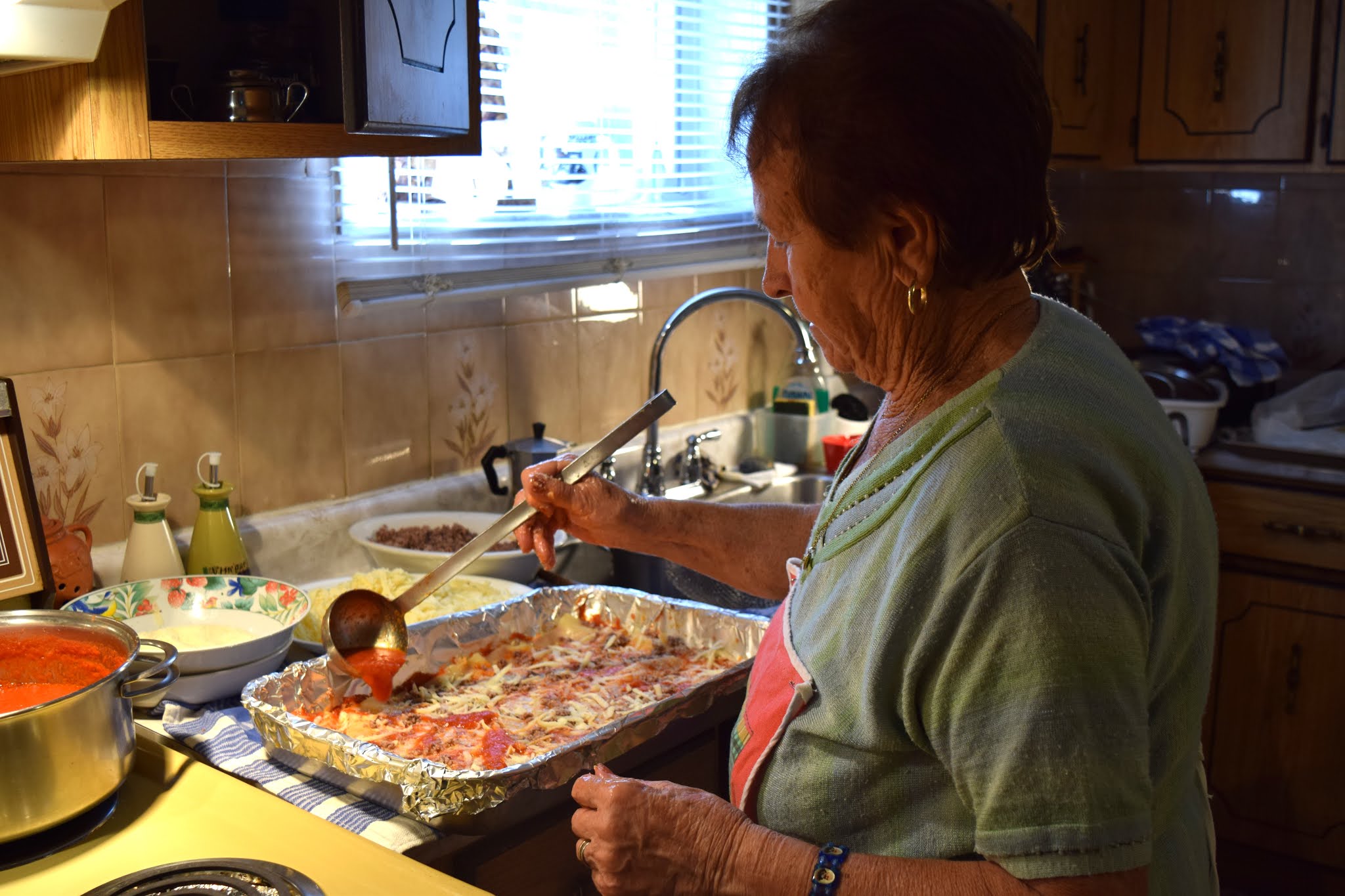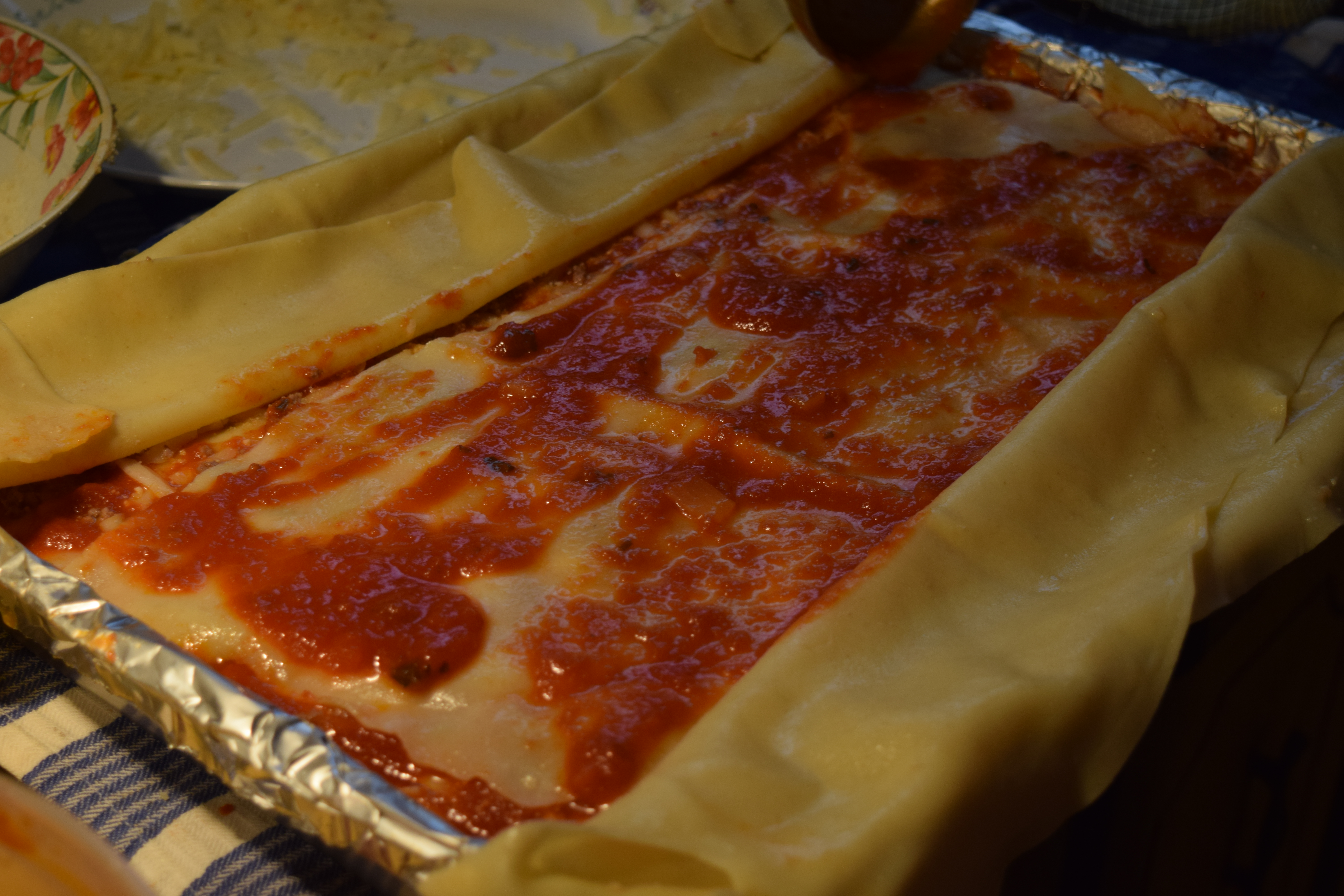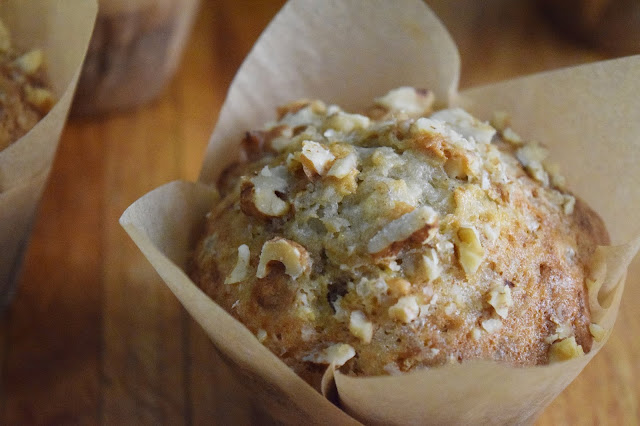cooking with Nonna and a classic lasagna recipe
My Nonna is the best. cook. ever. Seriously. After emigrating to Canada in the 1950s, she owned and operated a catering company called La Rosa Catering for 30 years, specializing in (of course) Italian food. Growing up, everything was made from scratch. And I mean scratch scratch,- if the tomatoes for her sauce weren't from the garden in the backyard, then they were from a farm that they briefly owned in Hamilton, Ontario. Her high standards completely and irrevocably ruined pretty much any food that isn't made from scratch for me.
Don't get me wrong, I'll eat absolutely anything if I'm hungry. But, I'll dream of Nonna's food while doing it.
It took quite a bit of explaining to get across what a blog was to her. In the end, I described it as something like an internet-newspaper-journal. Honestly, I'm not 100% sure if she really ended up picking up what I was putting down, but she did agree to let me take pictures and notes throughout the cooking process.
Please note: For present and future reference, I have absolutely no idea why my Nonna does some of the things that she does. There are certain steps that she takes in cooking that baffle me (most notably, drawing a cross into bread "so that it will rise"). But, they make for a delicious end product, so roll with it!
Lasagna
Yield: 1 lasagna wi/ 20 large pieces Prep time: 2 hrs Cook time: 1 hrs
Ingredients:
For the tomato sauce:
- 72oz tomato puree
- 2 small cans of tomato paste
- 6 basil leaves
- 1 onion, diced
- splash of olive oil
- salt to taste
- 700g ground beef
- 1.5c water
- splash of white wine
- 1 tsp salt
- salt to taste
- 1/4 c vegetable/canola oil
- 700g/9 large sheets (aka. 17.5" x 5.5") of fresh pasta, not dried. Regina Noodle sells great fresh pasta in the GTA for all of you Torontonians.
- 550g grated mozzarella cheese
- 130g grated parmesan cheese
1. Make the sauce: sauté the onion over medium-low heat in a splash of olive oil until cooked/opaque. Add the tomato puree, tomato paste and basil leaves and cook over low heat for 45mins to an hour, stirring occasionally. Season to taste and set aside.

2. Cook the beef: Place the ground beef in a small pot with 1.5 cups water, 1 tsp salt and a splash of white wine. Cook uncovered over medium-high heat until the water is simmering, the meat is cooked and the impurities have been drawn out of the meat (it'll look like a layer of white foam). Drain the meat from the water and set aside.

3. Meanwhile, fill two large pots with water. In each, add 1/8c of vegetable/canola oil and enough salt to make the water taste salty. Use your discretion on this one as the amount of salt will vary depending on the amount of water in the pots, but don't go overboard! Bring one pot of water to boil over high heat (you'll cook the pasta in this one). Leave the other pot on your counter (you'll put the cooked pasta in this pot after removing it from the boiling water. This cools it rapidly so that the pasta doesn't overcook as well as ensures that the pieces don't stick together).

4. Cook the pasta sheets until al dente in batches of four or five. Cook for approximately 4 minutes/batch, but the exact time will depend on a variety of factors including the size of your pot, amount of water and etc. so use your best judgement.


7. Place 1/2c sauce in the bottom of the pan and spread it out evenly. Place a layer of pasta horizontally in the bottom of the pan, shaking off excess water first. If the layers overlap at any point in the lasagna making-process, put a bit of sauce in between the overlapping sections to prevent the naked noodles from sticking/cooking together. Top with another 1/2 cup of sauce and a sprinkle of meat, mozzarella and parmesan. Drizzle 1/4c more sauce on top. Don't go overboard with the cheese and the sauce! This lasagna ends up having so many layers in the end that you need to have a light hand with the layers.

8. Build your lasagna layer by layer in this way, making sure to alternate the direction of the pasta (horizontal layer followed by vertical layer and etc). This helps with the lasagna keep it's structural integrity ensures that there aren't any gaps in the finished product.

9. When you've reached the point of your final layer, place one pasta sheet directly in the middle of the lasagna and cover with 1/2c sauce. Place two additional pasta sheets on top of the previous layer side-by side, allowing the edges of the sheets to hang over the sides pan by approximately 1.5 inches. Tuck the overhanging pasta edges into the pan and under the lasagna layers, just like tucking sheets into a bed.

10. Cover the top layer with another 1/2 cup of sauce and poke holes through the lasagna with a meat fork/skewer (this allows the sauce to bubble up from the bottom through to the upper layers). Don't top with cheese before baking! You'll sprinkle some on when it comes out of the oven. Cut the Lasagna into slices before baking. This allows for easier and cleaner portioning as well as quickerand more even cooking. Note: You can prep up to this point and refrigerate the lasagna, uncooked, for up to 24hrs in advance.
11.Bake the lasagna at 400*F for 45 minutes-1hr. The lasagna is done when the pasta is cooked through and the sauce is boiling around the lasagna slices. Sprinkle with a bit of parmesan and serve!
*Note: The lasagna can be frozen, uncooked, for up to two months. Defrost completely before following the above cooking instructions.











